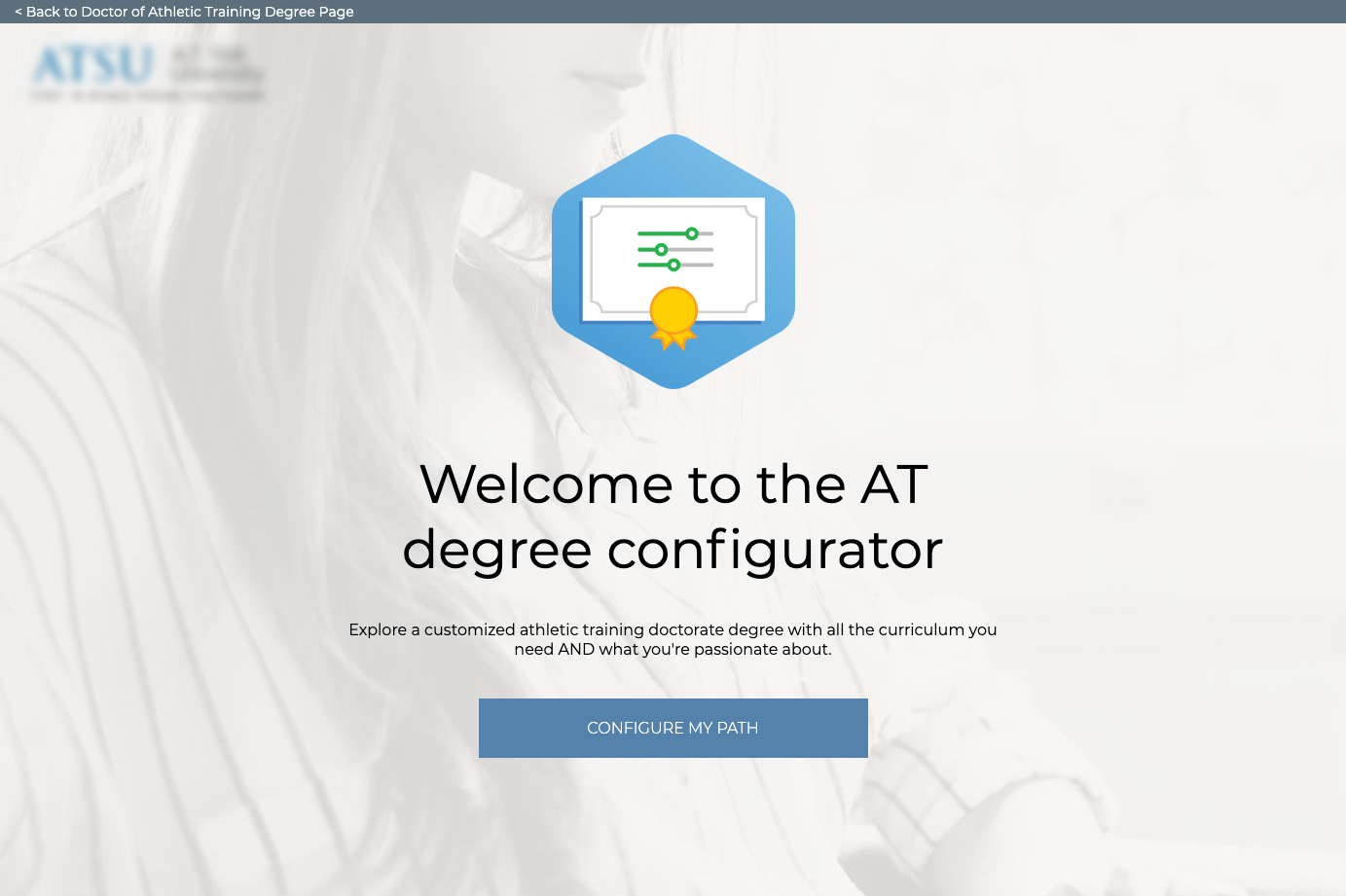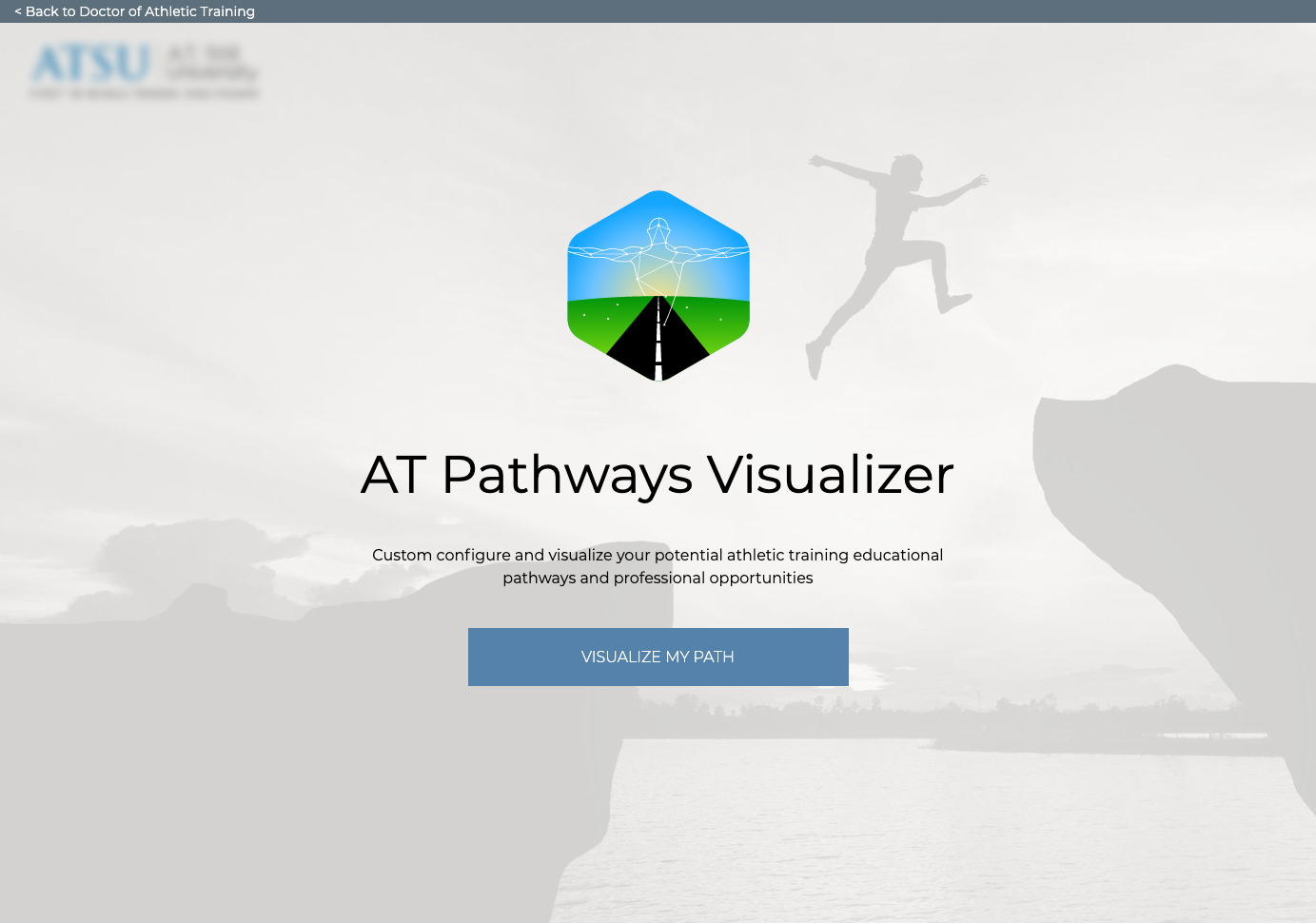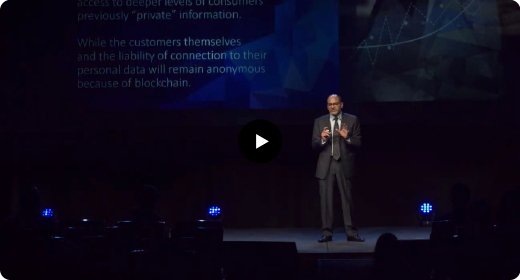
Marketing White Paper
Implementing Digital Credentials In Higher Education
PROGRESSIONS IN DIGITAL CREDENTIALS
Since the days of the late Industrial Revolution and the resulting creation of the Carnegie Foundation in early 20th century, the method of credentialing individuals with degrees and certificates of completion has remained unchanged. And for good reason—it didn’t need to change. The market’s needs have always been satisfied with a diploma presented on a piece of paper, adorned with an authorized seal by the grantors. The purpose is to convey proof of individual knowledge, mastery, or competency to others.
The customary manner in which graduates “prove” their education or training is still that of a framed certificate inclusive of an official seal, displayed for all to see in one’s office.
Another means of providing proof of an education is by sourcing a certified transcript which is facilitated and vended individually when formally requested. This process is beleaguered by requiring graduate verification. The request is then fulfilled by the granting institution. The entire routine is often treated as if the school is doing the graduate a favor.
The ordeal is inconvenient for anyone working through the process of validating someone’s credentials. The inconvenient, cumbersome system, on average, can take a few weeks.
The current process simply doesn’t work in the digital age. Because we use networks such as LinkedIn to connect employers to job candidates at the speed of the internet, we need a credentialing system in place to verify the validity of education credentials. On a LinkedIn profile, anyone can say they hold a master’s degree, but the only way to prove it is to follow the above process. It’s time for a change. Graduates need a way to instantly prove and showcase their credentials.
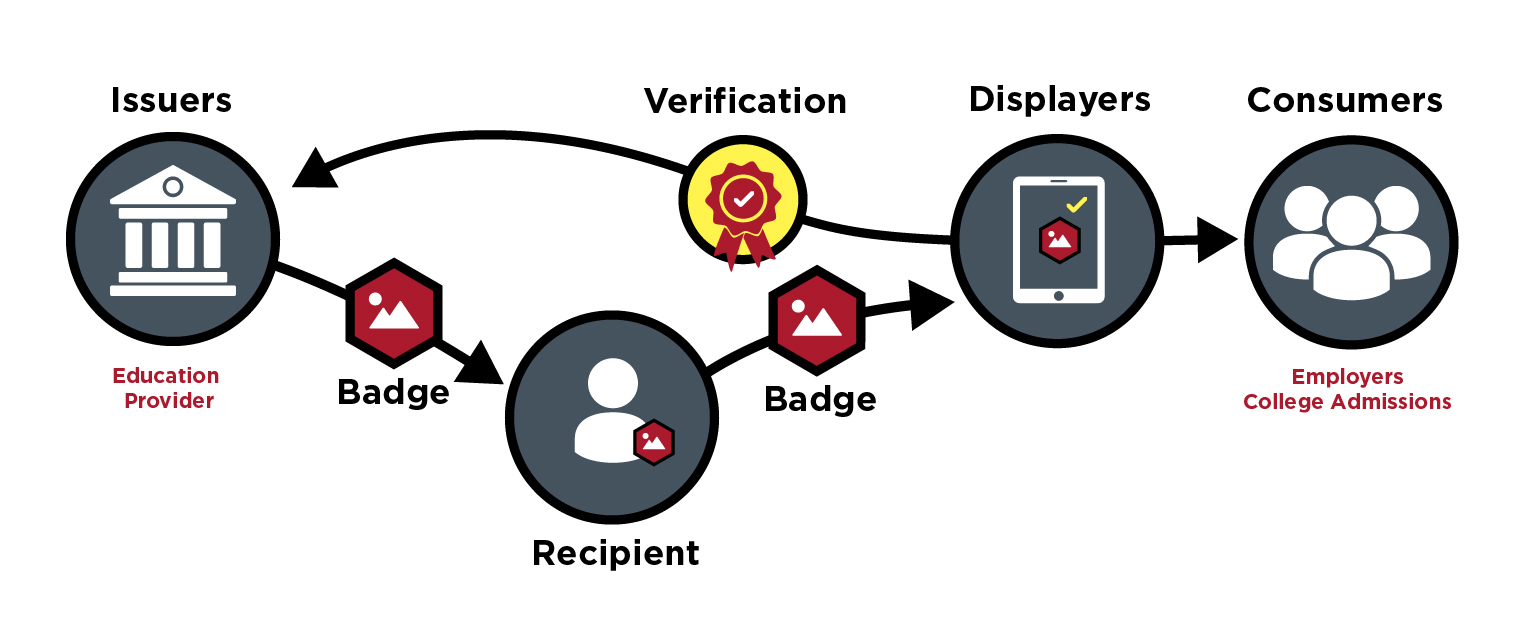
Exploring Strategic Opportunities
This marketing white paper is designed to explore the strategy, creation, development, and distribution of what’s been accomplished with digital credentials in the education space, where we are in the development cycle, and what’s next in the area of digital credentialing.
More importantly, we will identify strategic opportunities for private education institutions. This will empower these organizations to swim with the tide of change that will be brought to the market by the biggest brands over the next five years. It is important for private institutions to maintain their relevance and their most coveted asset, the graduate’s completion and subsequent credentials. Well designed digital credentials will also compete outside the institution and on the same battlefield as the professionals graduating from state education, industry training, and government-influenced and regulated industries.
This paper will discuss an efficient go-to-market approach for private education institutions on how to best harness the convergence of technology, culture, legislative trends, and platforms that are driving the digital credentialing movement. The objective is not only to keep pace with the economy’s digital transformation, but also for private education to use this opportunity to yield true added value for the graduates and create digital marketing efficiencies for the university brand.
- For the student: added relevance and engagement, on their terms, and built to be leveraged for a lifetime.
- For the university: added security, brand protection, community awareness, more efficient and effective segmented messaging for alumni, referrals, cross merchandising, and brand positioning.

The History of Educational Credentialing
In 1910, the Carnegie Foundation published reports and testified congressionally on the poor status of medical and law education institutions, which led to the closing of many low-quality credential-granting institutions managed by underqualified operators.
Through these early initiatives within the American education system, the grantors of official degrees and certificates had minimum standards enforced based on the quality of curriculums and training. The aftermath of these early initiatives within the American education system imposed minimum curricula and training standards on official degree and certificate grantors. The downline effect created the perception of education quality as a bellwether of both individual competency and institutional prestige.
Effort over the next two generations was applied to increase the public’s motivation to weed out unqualified workers and grant universities the job of determining whether a person is an apt candidate.
This progress, in addition to the public’s growing awareness of the difference quality education makes in professional competency, has led us to today. Credentialing in whatever form—undergraduate, graduate, certificates, coursework, skill-based assessments—within all industries, has shined a light on public credentialing. The market shift is how students of all types, industries, and age cohorts are now leveraging and touting their educational accomplishments within the new digital economies.

The Digital Professional Economy
It’s now hundreds of times more useful to showcase your prestigious higher education credentials within the digitally standard professional economy as a rightsized cognitive signal to all stakeholders that you are a qualified professional. Something must prove the letters after the name. These very important professional achievements need to be deemed worthy within the digital economy and designed to register cognitively on platforms where modern professionals interact, such as Microsoft 360 Teams, Epic EHR, and a plethora of professional and social networks.
The method educators have historically used to showcase their credentialed qualifications to the public has experienced little change, until the last five years. This change is marked by discontinuous innovation in the most common methods professionals use to signal their competencies. The momentum of change is sparked each day with another fire from the convergence of new technologies and driven by the economy’s transformation to a 24/7 digital-based and driven, instant-access professional economy.
Every Technology Has its Time and Place
The output of the education industry’s primary, standardized credentialing, the certificate or diploma, is undergoing a deep metamorphosis of use and distribution. Just like any new technology, it must heed the laws of the technology adoption lifecycle (TALC).
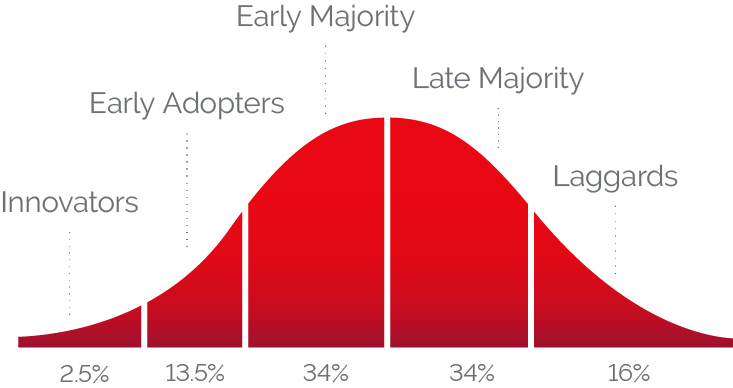
We hope the evolution of perspective will empower educational stalwarts to no longer consider “new” thinking as risky. We hope the old guard will acknowledge that professionals credentialed by their “real” institutions still need digital credibility because these graduates are no different than the rest of the economy that is prospering with digital credentials.
The ability to adopt, change, or offer something new and innovative to the market in the area of digital credentialing can leverage the lessons learned from deploying the same technology other industries have succeeded with for decades. Those lessons can be parlayed and purposed within higher education without reinventing the wheel. The ability to see the adoption of change and predict when and how it will affect different sectors of the economy has become a mature craft.
Three basic evergreen, self-correcting models provide an excellent lens going forward. Astute observers will consider these models within the context of Gartner’s innovations and adoptions market research as the go-to, gold standard for predicting market adoptions with billions of mid- and long-term investments riding on it every day within industry.
- Geoffrey Moore’s TALC model
- Gartner’s Technology Hype Cycle model
- Malcolm Gladwell’s Tipping Point model
Geoffrey Moore’s TALC Model and Digital Credentials
Discontinuous innovations disrupt the adoption bell curve, creating a chasm between the first two adopter groups (innovators and early adopters) and the majority adopters (early majority, late majority, and laggards). With most aspects of technology innovation, the more advanced industry sectors work on the innovation in its early forms for years on end. With adaption and adoptions within many advanced sectors of industry, we are often purposing the technology for decades. Innovation companies learn while incubating the technology, strategy, and implementation methods, so the technology can be adopted by the more risk-adverse and laggards with efficiency and lower risk.
Each industry adopts new technology and methods at a different pace. In comparison to most industry sectors, the education industry has proven to be naturally risk-adverse and generally considered a laggard in new technology/method adoption. For instance, in ecommerce, we have developed and perfected digital funnel strategies and tactics for decades before they were slowly adopted by education. When they did, it took years to prove the basic facts established in other industries. When it comes to technology adoption in education, we are asking the same basic questions other industries conquered decades ago.
Why? Higher education, as an industry, is not driven by daily and transactional value creation. On a daily basis, to create efficiency and just to survive within their market, many industries must deftly leverage technology. And if they don’t, they lose their customers the next day, month, or year to someone who has created more value with their brand interactions. Education often adopts new technology when it must, and often only incrementally.
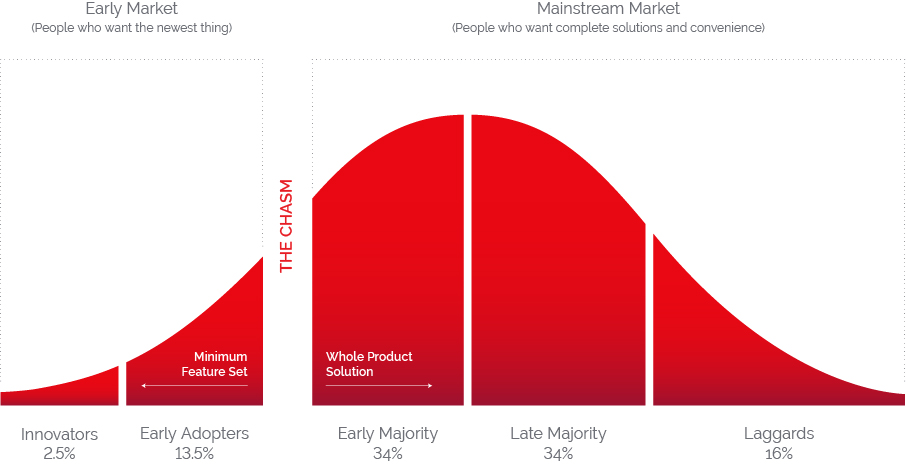
Gartner’s Hype Cycle
When Gartner’s Hype Cycle is applied to measure and predict expectations for digital credentialing, the model demonstrates evolving maturity of blockchain capabilities across industries from a business perspective. The five stages of the Hype Cycle include:
- Innovation Trigger
- Peak of Inflated Expectations
- Trough of Disillusionment
- Slope of Enlightenment
- Plateau of Productivity
As you can see in the figure below, the majority of blockchain technology is on the rise with a few key industries at the peak. Blockchain in education and government is slipping into the Trough of Disillusionment.
This 2019 Hype Cycle for blockchain predicts that the blockchain business impact will be transformational across most industries within five to ten years—we’re pinpointing what this means for education. The combination of the peak and the majority adoption phase, combined with other market factors discussed here, creates a tipping point for the use of blockchain and digital credentials in education.
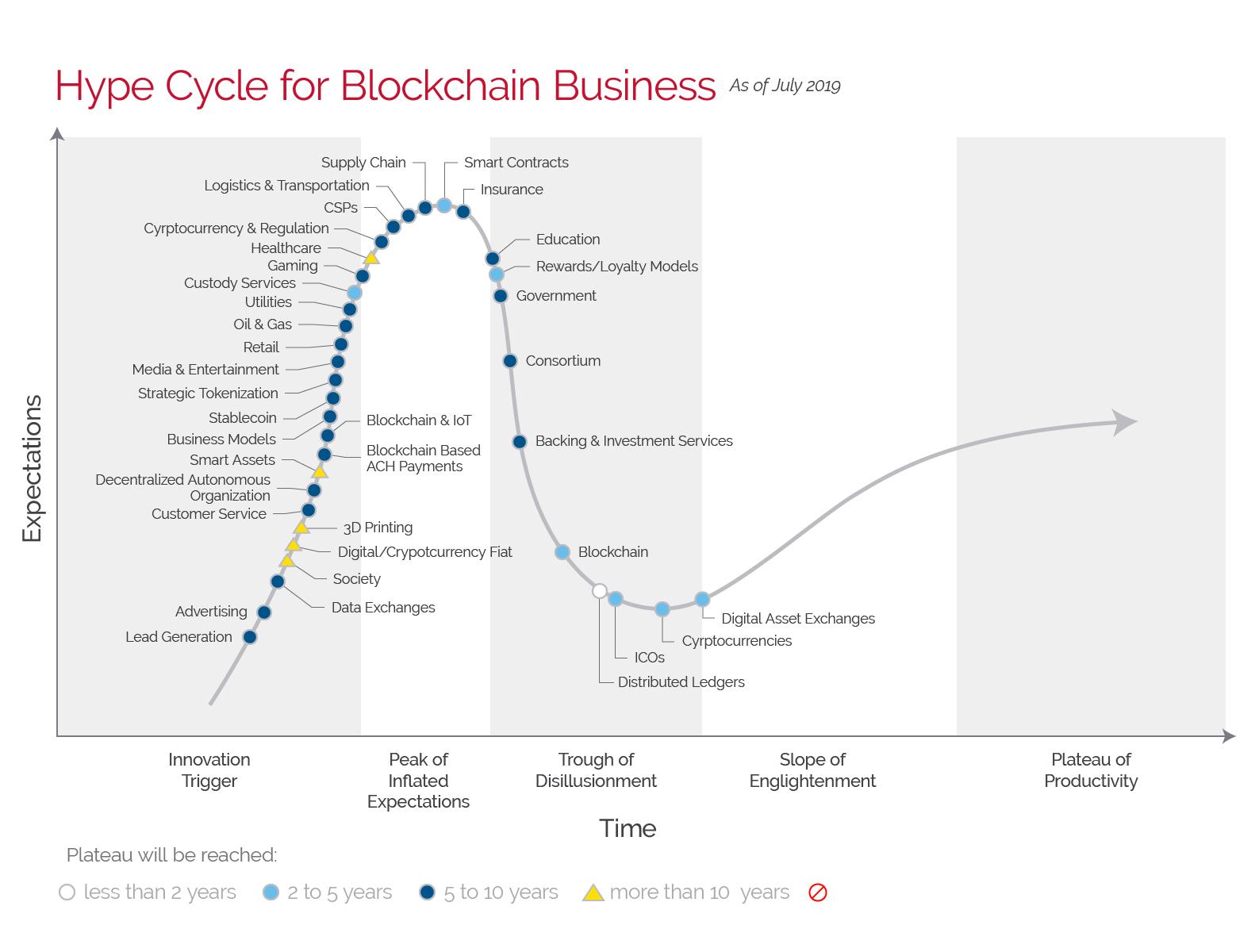
In sociology, a tipping point is a point in time when a group (higher education) rapidly and dramatically changes its behavior by widely adopting a previously rare practice (digital credentials backed by blockchain).
Blockchain has the potential to transform business models across all industries, but these opportunities demand that enterprises adopt complete blockchain ecosystems. Without tokenization and decentralization, most industries (education included), will not see real business value.
This means mass adoption and disruption across education is on the horizon. As we’ve seen technology disrupt industry in the past, such as the personal computer, Uber, or Netflix, we’re going to see that again—this time in education.
The Trends of Digital Credentials Leverage Past Uses
Most industry sectors have been using badges for years to display accomplishment and distinguish the practitioners from the pretenders. An early adopter was the military who started badging in the 19th century to show rank and marksmanship ability. Boy Scouts of America introduced Merit Badges in 1911 to signify the acquisition of life skills.
The industries where badging has been applied with great success for decades include police officers, airline pilots, firefighters, mechanics, clergy, and paralegals—all with the unified purpose of providing a method of instant trust and confidence.
We have seen the idea of badges purposed to become proof of certifications and occupational licensure with grey-collar labor, where workers often have licenses, associate degrees, or diplomas from a trade or technical school. The natural progression continues.
‘90s Advanced Digital Credentialing by Decades
In the ‘90s, we saw the technology industry take on badge credentialing with the introduction of cyber security standards. Most industry sectors adopted digital badges, including almost every major technology product or platform, notably, Google certifications and LinkedIn learning certifications.
Digital credentialing technology methods and processes have now matured. Digital communications have become more important for the professional graduate. They are proud and want to display their educational accomplishments efficiently on their resumes, websites, or professional digital profiles.
Once astutely studied in context, we can clearly see that education (as a laggard in this area) is now jumping the chasm and entering Moore’s early majority adopter phase with digital credentialing. A private education brand that wants to harness its digital equity can now consider new possibilities and new considerations.
Credentials of the Future
The resume of the past is rapidly changing with emerging methods and converging technology replacing the traditional ways we represent everything. It’s time to include our education and skills earned from higher education. In a virtual world, the ecosystem of virtual credential suppliers and the myriad of options have been slowly growing over the last decade for go-to-market solutions.
Now in the age of big data, education must consider security and trust as a top design parameter.
Blockchain provides the answer for higher education and is the leading solution for security and trust concerns. The solution sets are viable and can be intelligently stitched together with the right strategy and design to level the playing field between larger and smaller education brands.
Blockchain Is Not Cryptocurrency
One of the most popular implementations of blockchain right now is in cryptocurrency, such as Bitcoin. While Bitcoin is an important aspect to the adoption of blockchain, it’s only one form of technology implementation. Cryptocurrency is just a byproduct of the blockchain technology. Blockchain can be used for a multitude of different applications, including anything that needs a high level of online security.
One cornerstone of Bitcoin and cryptocurrency is the anonymity factor. Anyone can partake in the blockchain, and their money or data is secure thanks to the immutability of the block hashes. However, this is fundamentally different from blockchain that is being developed in business sectors. There are a few enterprise blockchains emerging with specific applications and use cases. One such blockchain developed by The Linux Foundation, called Hyperledger Fabric, has introduced the ability to create private channels inside the distributed ledger. This allows the user to share private data with a specific party through private channels and IDs. These types of progressions and applications are the engines that drive business under the hood and are continuous and accelerating.
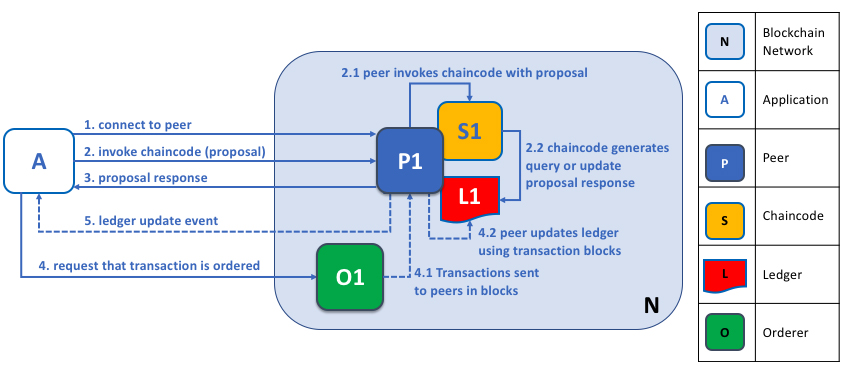
Blockchain and its Promises, Successes, and Failures for Credentialing
Blockchain is a diverse new technology that is currently only used at a basic level. Think websites in 1995. To use blockchain at its full capacity, it takes developers learning, understanding, and adapting the different uses and implementations.
At the moment, blockchain is the “un-hackable” golden goose in Silicon Valley due to its decentralized nature. Currently, there is no way to create a “fake” credential with the use of blockchain because the algorithm creates an unrepeatable, indelible verification when a new badge is added to the chain.
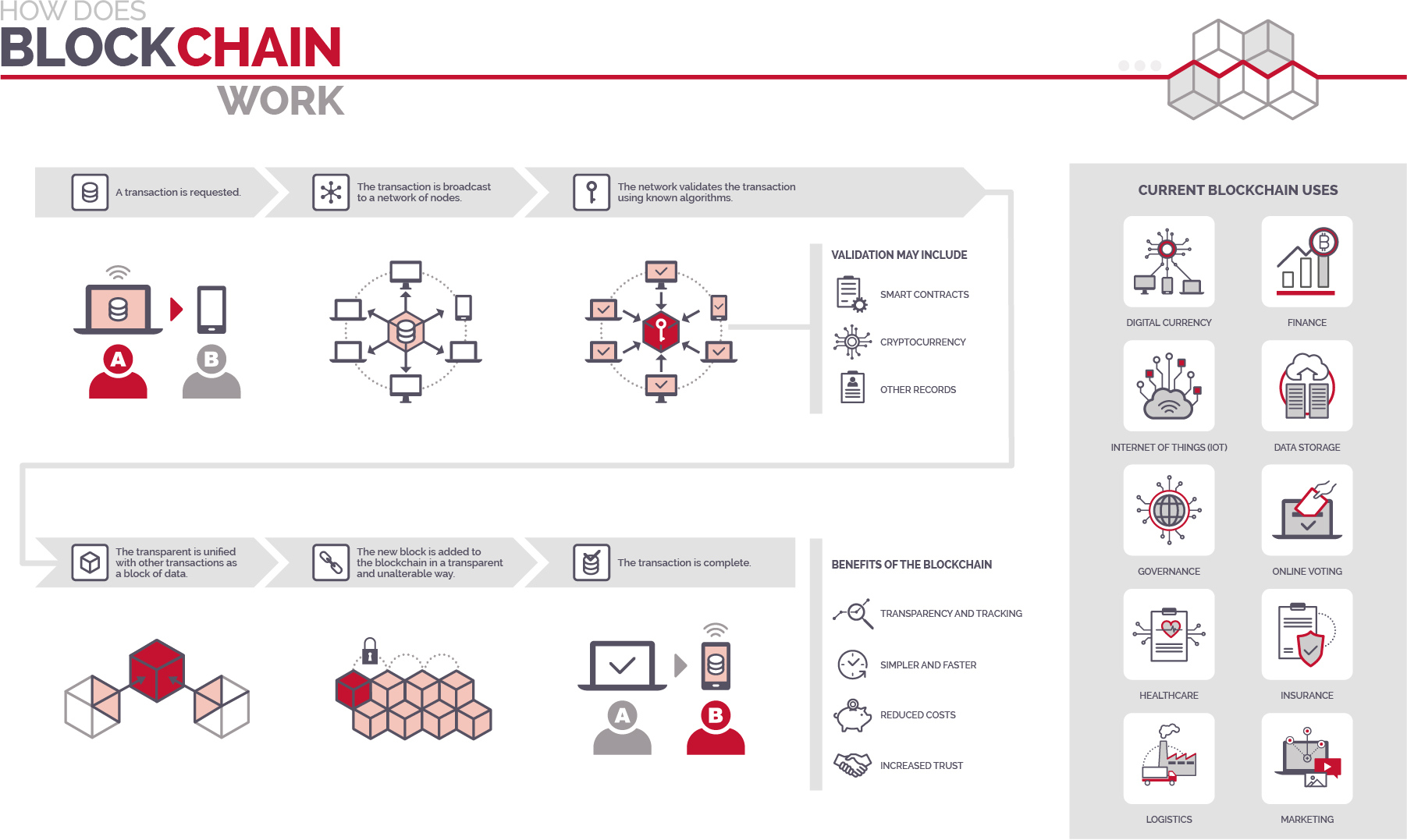
This provides increased levels of security and trust between all parties and will create the opportunity for the digital badge ecosystem’s continued rapid growth in the years to come.
While the digital badge market became established across the world over the past decade, the blockchain aspect of the business is still in its infancy. There are many examples of established badge distributers now adding blockchain security into their already existing databases.
Two Basic Development Paths with Many Flavors
The evolution of the industry will be dependent on which development structure businesses decide to follow. To help create context, make sense of the new buzzwords, and help executives gain understanding and familiarity, the next section discusses the major players in the industry so that they can ask the right questions and can see through the fog of new opportunity.

The Linux Foundation and Hyperledger
The Linux Foundation has been working on the Hyperledger project for the application of blockchain to multiple different business sectors. Hyperledger began with Fabric, a blockchain whose core is written in the Go programming language and was originally created by IBM until the Linux Foundation took it under the Hyperledger “greenhouse.”
The Indy project, which is a part of Hyperledger, is primarily used for digital badging. Originally started under the Sovrin Foundation, the main goal of Indy is to provide digital identity to individuals and provide them with the power to share it with whomever they choose.
Executive Director Brian Behlendorf has made a point to emphasize that Indy’s blockchain software is based on data minimization, meaning that when a company uses Indy to store personal data, the data isn’t actually stored centrally, rather, the pointer to the data on Indy’s blockchain is stored decreasing potential data vulnerabilities. Data breaches on centralized databases are increasing the market need for this service.

Blockcerts
Contrary to the development style of Hyperledger and the make-it-yourself mentality, is Blockcerts. Blockcerts is an open source software for creating, issuing, viewing, and verifying blockchain-based digital records. Blockcerts uses the term blockchain agnostic for blockchains that are implemented to use within the Blockcerts open standard. Blockchain agnostic means that Blockcerts can be implemented using any blockchain you wish, including Hyperledger Indy.
The fact that the software is open to multiple blockchains will greatly increase the adoption rate in the early stages. Although, for small to midsized university brands, it’s important to consider the commonization that will ensue as this approach will benefit the industry at large. As a result, smaller brands will be given a copy and paste of the big brands. This will be after the leaders have squeezed the value, kept the best for themselves, and broken off a piece for use by others.

Blockchain’s Open Source Growth
Digital credentials are going to grow into an integral part of higher education. We will see them move through the K-12 classrooms and become a key part (confidence and validation) of the future college admissions process. It’s important for digital-centric lifelong learners to begin a virtual resume of their skills and achievements that follows them throughout their studies to signify the growth in their careers.
In the decade in front of us, it will become even more important for higher education institutions to not only leverage the learning of their prospective students in the consideration process, but also to help students extend their digital resumes. Those who do not provide credentials in these new formats will be offering their graduates something less than. The digital generation will not let the Boomers’ need for paper and affinity for snail mail control their ability to showcase their education.
Digital badge markets are expected to grow to over $200 million USD by 2023, and this growth is only going to increase the need to improve the trust between all parties in the digital badge infrastructure. We already see the market growing from a large merger between established credentialing companies—Credly acquired Pearson’s digital badge API, Acclaim, to help with the blockchain implementation.
Some companies are working to provide open source libraries for aiding in the development of digital badge apps incorporating blockchain at the center of the verification. Open source libraries are uniquely valuable for the adoption of new technologies into the ecosystem. Through an API, they can allow an extension of the functionalities of existing systems (versus reinventing or creating another system within the institution).
Three Basic Approaches to Create Blockchain Credentials
There are three basic approaches to development that need to be considered first when a small to midsize brand approaches a project of this nature. Each major direction has many shades of grey between them.
- Buy the service offerings.
- Build it all from scratch.
- Customize the functionality.
The digital credential ecosystem is bigger than ever, and a few major players are employing large acquisitions to increase their reach in the market. The initial players in the game have exhibited three different models in their execution.
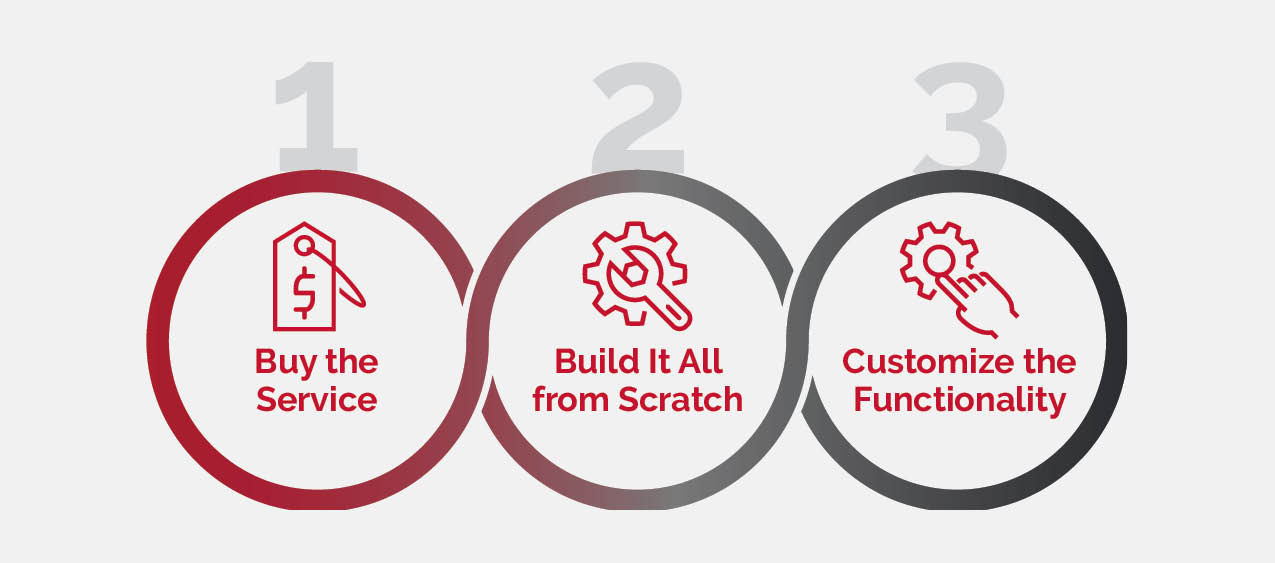
Buy the Service
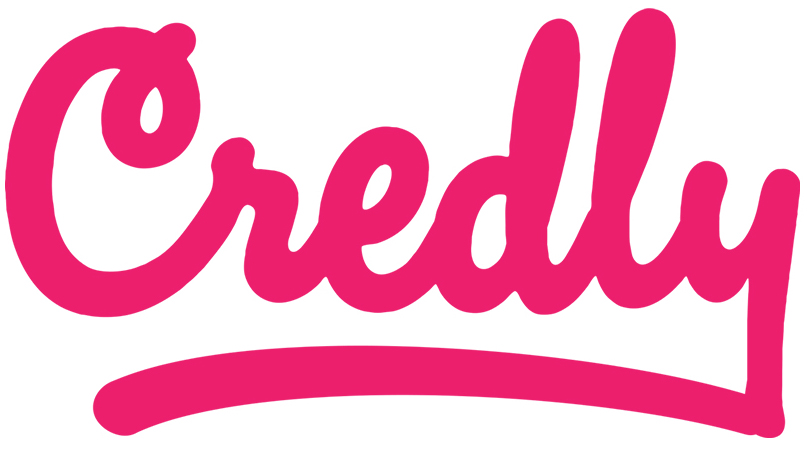
Credly
Buy the service and pay another company for the technology, systems, and the maintenance and extension of that system. The customer pays for custom development to load their designs into someone’s curated system, as well as monthly or yearly platform management fees.
CompTIA (Computer Technology Industry Association) has provided IT certification and testing resources since in 1993. The first exam was created for new technicians to demonstrate competency over a variety of basic computer installation skills. In early 2019, CompTIA announced they would utilize the Acclaim platform for the issuing of their certificates, which range from cybersecurity to sales and project management.
DigitalMe, a Europe-based company founded in 2003, established themselves as the European certificate authority over the course of a decade. In 2015, they announced that they were working to align their badge data with the Open Badge specification. Following the specification guidelines from Open Badge Academy, they launched their platform in 2016. In January 2019, the platform began migration from Open Badge Academy over to Acclaim and issuing their credentials through the Credly infrastructure. By Credly acquiring the DigitalMe customer base, Credly is near the top of the digital credentialing business in the U.S. and Europe.
The growth of the digital credential industry is attractive to the professional IT industry, although it is important to keep in mind that the new reach Credly has gained through these partnerships has put the company in the position to collect personal data from millions of professionals worldwide. The big challenge these operations face is universities becoming savvy about not wanting to give up their students’ data, regardless of using a written nonuse agreement—if another company has the data, then the university may not.

Accredible
Another digital credential company that holds a large portion of the market in the U.S. and Europe is Accredible. Accredible was founded in 2013, and since then, has grown to deliver credentials for Rosetta Stone, Google, and Udacity, among others. The certificate authority announced the addition of blockchain verification to their platform in 2017, around the same time Credly announced their plans. In 2019, Accredible received the Best Innovation in Blockchain Technology Award.
Accredible is Open Badges compliant, which means that the badges can be downloaded as PNG files and independently verified using any Open Badges validator. Accredible provides an internal validator as part of their platform, but if there is an institution that doesn’t use Accredible, then they can upload the PNG to the IMS Open Badges Validator to verify the authenticity of the badge.
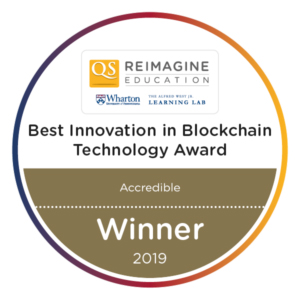
The tactics employed by Credly and Accredible to align themselves with the Open Badges specification has increased their size and their pool of potential customers.
Pros & Cons
Both Accredible and Credly have a long history in the credential business, this leads to a large reach in the upper education market. These two companies have had time to figure out what people do and don’t like in badge designs. It’s important to keep in mind that the volume of these operations may increase difficulty in implementation with small to midsized institutions that educate in specialized niche fields.
Accredible charges their customers based on the number of recipients which may prove costly.
Build it From Scratch
You own it, manage it, and control the functionalities.

Greenlight Credentials
Greenlight is an example of a certificate authority that is using its own credential schema and database (Greenlight Locker) to store the credential records. They designed their service around the Hyperledger Fabric codebase and have taken advantage of local relationships to build their initial customer base. Headquartered in the Dallas area, they built business connections with primary education institutions for distributing digital credentials. This partnership is especially exciting because this is the first occurrence of digital credentials being implemented in K-12 environments.
The ability to begin skills and STEM acquisition earlier in life will give students even more opportunities to gain credentials that can help them throughout their lives. There’s an advantage to using the local school districts, but it’s very important to recognize their product is very “in network,” meaning that if a student built their records throughout their youth in the Dallas area and is looking to go to school across the country, then all they can do is hope that the university will accept the credential from Greenlight.

Customize the Functionality
Customize the functionality as an add-on to existing systems and develop a hybrid system using open source components. This avoids reinventing the wheel and creates something that is designed for in-house use, with the ability to produce and leverage brand-centric presentations, while building new competency and competitive advantage within an institution.
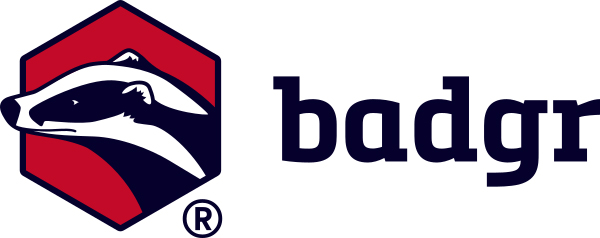
Badgr and Badgr Pathways
Badgr developed the Mozilla Backpack for badges that are compliant with the Open Badges specification to be stored securely in one place. As development of Open Badges moved to IMS Global, Mozilla decided to find a trusted organization to take over in further development of the backpack so that it would follow the changes on the Open Badges specification. Badgr, an established credential distributer, was chosen to take over development because they already created backpack before Mozilla’s backpack was brought to their attention.
Badgr Pathways is a service that allows credential holders the ability to connect different Open Badges from multiple issuing organizations. For example, you can receive credentials from multiple universities, but all those certifications can be linked together under a Badgr Pathway. Badgr Pathways changes the way a user can represent your credentials, because instead of a static list of qualifications a user has received, they can build a model of how their learning has progressed and where their focus will be in the future.
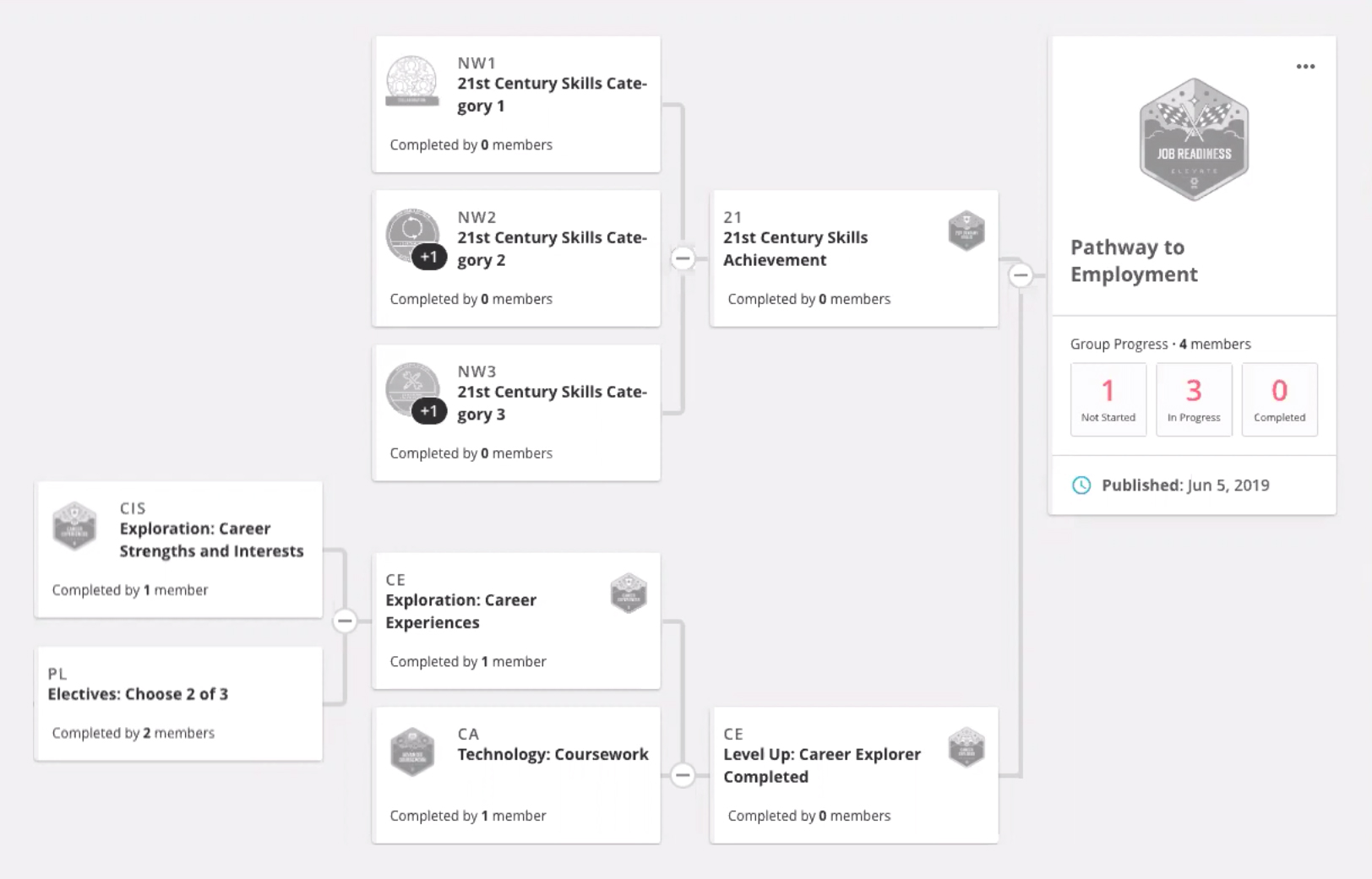
Badgr is an attractive solution to credentialing when using Pathways in addition to BadgeRank. BadgeRank is a search engine for any credentials that align with the Open Badges 2.0. This supplement to Badgr makes the pathways much easier to create because you can find any badge you may have received in the past regardless of the issuer (as long as it is an Open Badge). One disadvantage to the Badgr platform is that, due to their worldwide operation, they separate their database across four different servers (Australia, U.S., Canada, and Europe) depending on where you are in the world. The problem with this is that there is no native functionality for transferring records from one server to another other than a one-at-a-time linked transfer, which can prove difficult for some users.
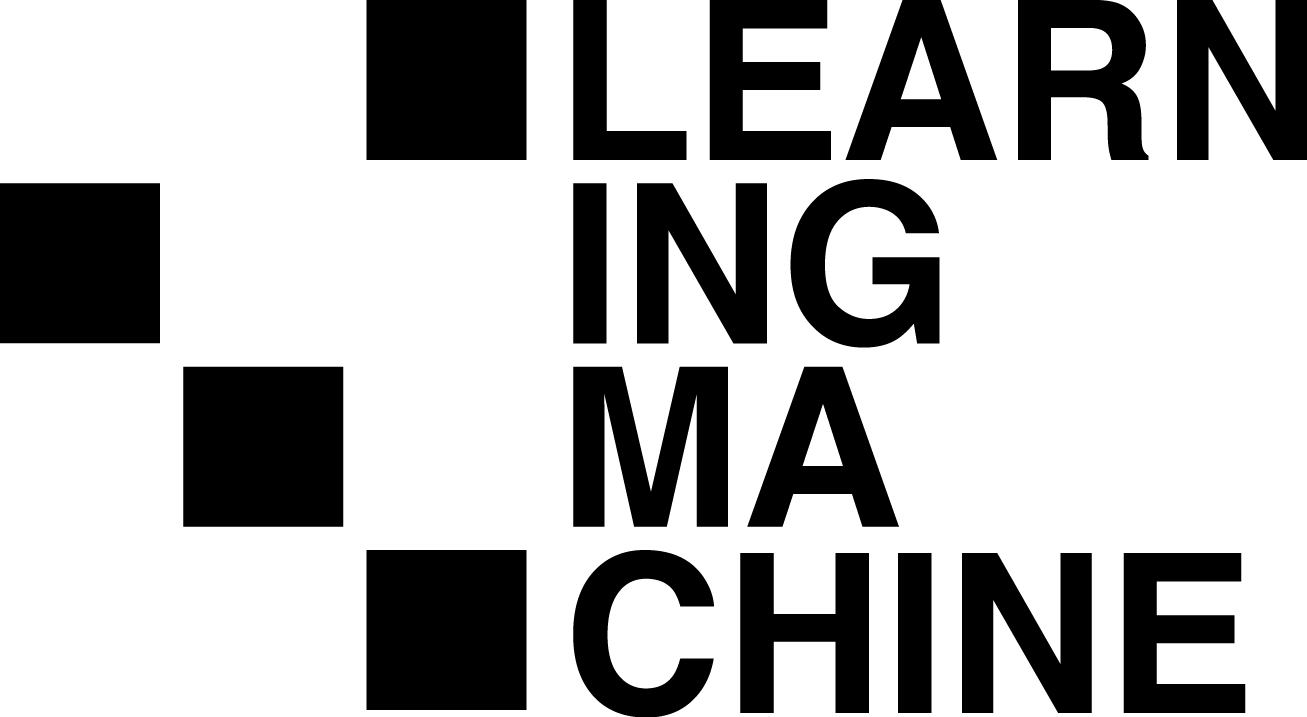
Learning Machine
Learning Machine offers services to support the users of Blockcerts by developing software around the Blockcerts codebase. This is specifically designed for integration teams creating customized solutions for an institution.
In late 2017, Learning Machine began working with The Maltese Ministry for Education and Employment (MEDE) on the pilot Blockcerts program. Apparently, the pilot was successful because in early 2019, the Maltese government announced the nationwide rollout of the Learning Machine Issuing System to all schools. All diplomas, transcripts, school leaving certificates, and other records for public or private education will be issued using the new system.
While Learning Machine has seen success in Malta, it is important to highlight some pros and cons. The enticing aspect of Learning Machine comes from their implementation of Blockcerts. The credentials they issue are Open Badges, which will increase their validity regardless of the location where they are being used. One downside to Learning Machine is the fact that they are selling solutions using an open source codebase. Therefore, with a little know-how, a credential system can be built on the Blockcerts system without the need for Learning Machine to build it.
As of February 2020, Learning Machine was acquired by Hyland, a software company that has been around since 1991 and has developed software solutions in many industries from financial to education to healthcare.

There’s No Need to Reinvent the Wheel. Just Buy One.
Blockcerts is developing a more efficient go-to-market approach specifically tuned to the typical mindset and approach of education. Seasoned operators in education must recognize that other industries developed turnkey solutions that have scaled with incredible quality.
LMS Integration with Digital Credentials
University of Minnesota Medical Center (UMMC) reported in 2018 that it had issued nearly 600 digital credentials, seeing improvement to faculty and student outcomes. UMMC noted that the integration of Credly into Canvas greatly improved the logistics of issuing badges as they moved from sending student lists to Credly for issuing to building modules that automatically issue badges as they are completed.
The digital credentials in universities are important because they fill the gaps to show skills acquired in studies that normally wouldn’t show up on a transcript or resume. UMMC formed a digital credential subcommittee to establish governance procedures around the Credly-Canvas integration to ensure a high level of quality and consistency in the credentials. All UMMC credentials require measurable learning objectives that correlate with assessments. This approach will launch them to the next level in this arena.
A range of different credentialing companies exist on the Canvas ecosystem. It is important to recognize the difference in some of these companies when it comes to how they structure their business. Some of them, such as uCertify, focus on the testing and teaching, while others, like Credly, let the institutions do the testing and teaching and only execute the actual issuance of the badges.
Integration of Another Flavor with the Canvas Ecosystem
In October 2019, Instructure announced that Portfolium, a free student portfolio network, is now integrated within Canvas. The combined capabilities allow students to showcase their achievements, projects, and competencies to potential employers. Students can create a Folio from inside Canvas that will link to the Portfolium Network and follow them throughout their academic and professional careers, serving as an expanded resume or CV.
Portfolium is designed for students to have lifelong access to their Folio to organize learning assets, connect with other Folio users, and curate content to help showcase their skills. These additional capabilities are enhanced by a partnership with Badgr, providing Canvas and Folio users the ability to issue digital credentials that verify skills.
The challenge with this approach is that it’s controlled by the student and the third-party company. As an example, one current user touted by this company says, “To be able to show my class projects, volunteer work, extracurricular activities, and interests outside of my academic life was just the right boost I needed to launch my career and find new growth opportunities. I always credit Portfolium for providing me with the skills and work experiences I needed to land my new role at my dream job.” The universities miss out on all the business, brand reputation, and networking equity that would normally reflect the university.
I always credit Portfolium for providing me with the skills and work experiences I needed to land my new role at my dream job.
Executive-Level Brand Critical Thinking
Keep in mind that of all the things your company owns, the brand—once established—is far and away the most important. Founders die. Employees move on. Offices burn down. Technology wears out or becomes obsolete. Brand loyalty is the only sound foundation on which business leaders can build enduring, profitable growth.
- Why would a university give up their most precious brand awareness and positioning value?
- Why would a university give away the opportunity of hundreds of thousands of digital credential clickers to be dropped onto another company’s ecosystem to verify the credential?
- Why would a university give up all of the awareness of the community, employer, student influxes, and donor value with this new approach?
Rule of thumb—any vendor will only sell what they have, even if their solution is not the best option for a school’s use. True innovators will not learn this fact until after the first implementation. With some higher education teams and processes, this can take years.
It keeps a private university from leveraging the unique opportunities this will provide. To create added value and position the university with the same operational dollars used to update and secure old systems, it takes approaching digital credentialing first and foremost from the user’s point of view.
Implementation Possibilities
Designing a credentialing platform that operates on blockchain begs the question: how much do we want to build ourselves versus taking advantage of the resources and APIs already in the digital credential ecosystem? Essentially, do you want to align your data with Open Badges 2.0 or not?
Structuring the data with the specifications from Open Badges 2.0 will open the opportunity to access the Blockcerts API. Access to Blockcerts will promote the quick implementation of blockchain into the digital credentials, while opening the opportunity for instant verification across multiple verification services.
Aligning with Open Badges begs the question: is this the optimal design? Do we want all verification traffic for our credentials going across different sites that can verify Open Badges, or do we want to take all verification on our own site and handle the constituent interactions ourselves? The latter leads to a different development path, using Hyperledger as the blockchain for verifying the credential is one path.
Options and Flexibility are Critical Within 1.0 Executions
There are many other options out there for developing a more specific data structure around the blockchain credential. Towards the end of 2019, a new blockchain company, Trust Assurance Network, launched as a Software-as-a-Service (SaaS). The service applies to almost any industry or business that needs to securely exchange information across a network. They provide solutions including APIs, a solid blockchain token, and a component for the transaction of records. This would be an efficient implementation for handling verifications internally.
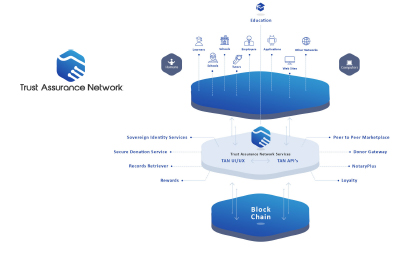
Importance of Design When Creating Digital Badges
The golden rule of original design and innovation: design for the future, not the previous use cases.
It’s important to support the ROI of design when developing a new product that will be used in very different ways than the original (presentation on a LinkedIn profile, CV, resume, or within a digital email signature, versus hanging a certificate on the wall). The key to product development is not to make the new design in the same likeness of the old product (students and employers still can have a transcript and printed format too).
80 percent of what we see emerging in this space is missing the mark. Take this badge for example. Is this really supposed to fit at the end of an email signature? Or on someone’s LinkedIn profile?
The designs are either created by IT or internally driven by old school educators. Take for example the personal computer. Originally, it was designed in the form of a typewriter (Commodore 64) because it could type. Later, someone came along and asked: How is this best used? What are all the possible ways this can be used? What things will this be able to do? The Apple Macintosh was born, and it revolutionized personal computers based on design and positioning brilliance alone. Apple opened the world up to the possibilities of what could be, and a new generation was ushered in.
This is that same moment for education and digital credentialing. A student earning a degree is just the start, not the end game. The diploma and snail mail transcript are the typewriter.
Design of the interface and the actual credential will be the difference between wasted opportunity filled with a placebo and what could be secret brand sauce that makes others covet and creates brand preference, awareness, consideration, and affinity.
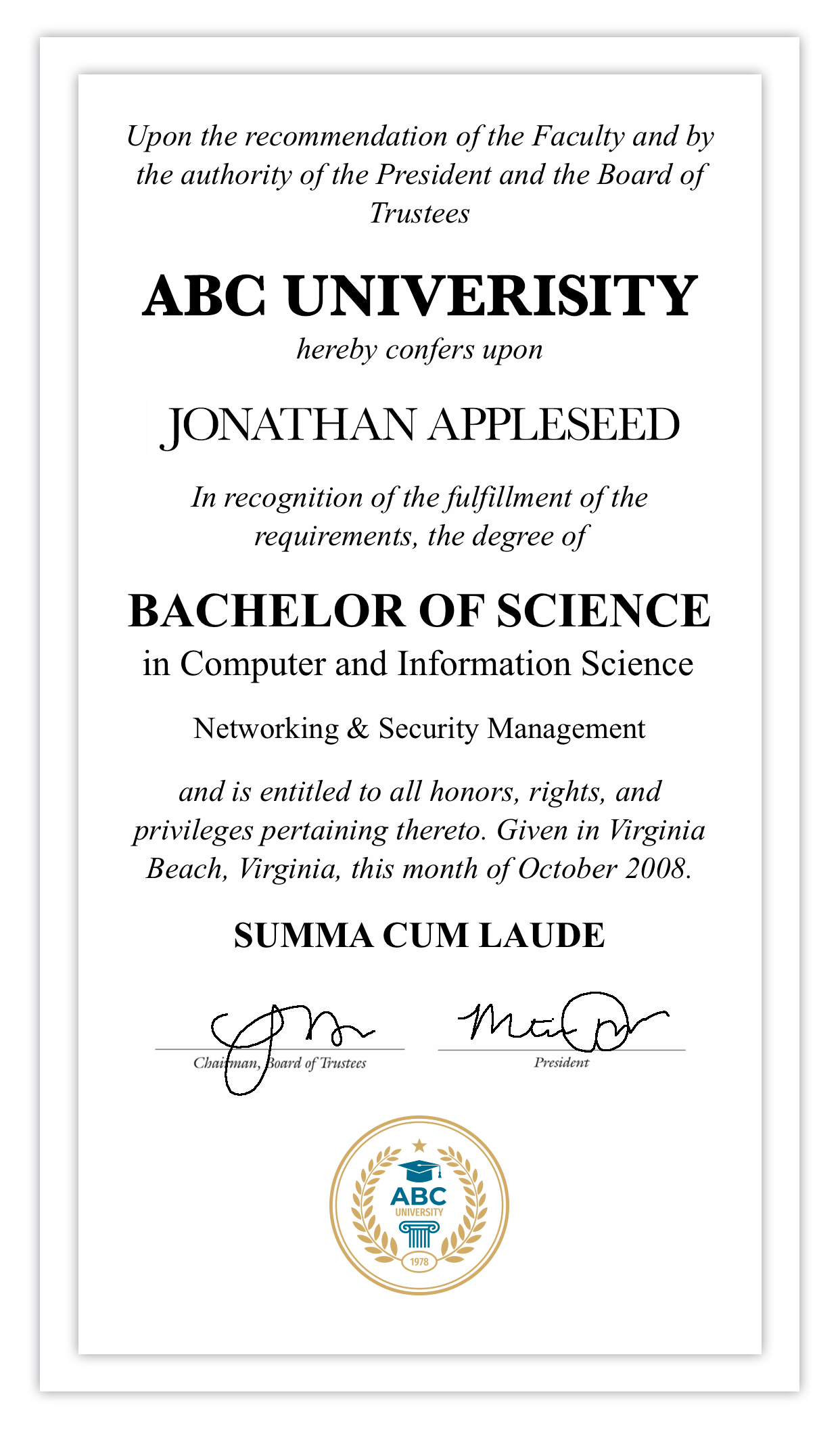
Realizing the Potential
Small-to-midsized private education institutions deserve a right-sized solution they can control, customize, and use to leverage their brand. This evolving technology and the convergence point it ushers into education is truly paradigm shifting when considering the downline extensions and how it can be monetized. Additionally, the byproducts of its development will allow universities to efficiently merchandise their main assets into many new segmentations.
The shift in the technology’s capability matched to the market’s massive transformation in the use of credentials over the last ten years empowers true efficient innovation to permeate the enterprise. Its result will be degrees that are easily marketed digitally in their sub-section parts as certificates. With many of the same costs of sales, universities will be able to effectively merchandise each course as a separate offering. This new ability will increase margins within the institutions, drive new budget neutral revenue streams, and easily scale core assets (curriculums).
The potential of digital credentialing right sized in higher education for a private brand empowers marketability by efficiently allowing the creation of customizable hybrid curriculum assemblies between areas of cross discipline knowledge. In technology and healthcare education, we have a transformation in play with the talent pools. It’s important for private brands to recognize this opportunity. Universities can go a long way in rightsizing their technology debt, slingshot their brands, and keep pace with the digital economy.
Security Challenges with Digital Credentials
The largest motivator for the switch from classic databases to storing credentials with blockchain is the possible security breaches that can occur when storing all data on a centralized database.
Comodo, a credentialing authority based in New Jersey, is in the business of deploying credentials across many trusted domains. They experienced a security breach that originated from the attacker gaining access to a username and password for a Comodo Registration Authority account.
Comodo released a statement shortly after the breach explaining that the hack didn’t extend to additional administrative information, such as root keys or intermediate certificate authorities. Comodo quickly notified the domains that accepted their credentials of the breach to allow the domains to deploy patches so that no false credentials were accepted by their systems. Comodo is still operating today and has been developing a zero-trust platform over the past couple years.
The Loss of Credibility
Another similar attack happened to Netherlands company DigiNotar, another certifying authority similar to Comodo that deployed certificates for Yahoo and Mozilla and other big domains. An investigation was conducted by Fox-IT, a cyber-security firm focused on helping mitigate potential data vulnerabilities at the enterprise level.

They discovered that the breach originated from a man-in-the-middle attack. Gmail users gained a wildcard credential which gave them extra services they previously didn’t have access to. It was discovered that hackers were able to gain access to the database from eight DigiNotar servers and forged certificates that were distributed across high-value domains, which happened to be trusted credential distributors.
This breach was particularly concerning because DigiNotar also issued government credentials. The Fox-IT team was able to identify some ID numbers that didn’t match the official records of DigiNotar. Fox-IT noted that while they identified some credentials, there was still a large possibility of unidentified false records being administered and in circulation. The breach caused major trust issues with the credibility of their certificates and resulted in DigiNotar declaring bankruptcy a month after the first indications of the security breach.
Finding a Solution
Both security breaches originated from the same IP address in Iran. The anonymous hacker claimed responsibility for both attacks, and Fox-IT found fingerprints left in the servers that indicated one person executed both attacks. While both companies were a part of the infancy of the digital credential industry, they demonstrated the utmost importance of the security behind credentials.
The breaches also showed that the technology needed to improve so that real trust could be established between organizations before technology adoption reached the early and late majority. The public was beginning to trust the technology before the hacks occurred, but these security breaches slowed the business growth of the digital credentials and reduced the trust that was built up from years of service. Blockchain is a solution to this security problem, but wasn’t up to par until 2016.
Organizing Badge Data Trends
When it comes to the adoption of emerging technologies, the development of open source software and systemized data structures will greatly increase the ease of market entry. An important aspect of the digital badges is machine readability, so that all verification, sending, receiving, and displaying can be accomplished in a secure fashion over the internet.
Within the digital badging industry, the data needs to be structured in a way that maximizes security while minimizing the development time for integration. As the digital credentials have evolved over the past decade, so has the structured schema that is commonly found in this ecosystem. The concept of an “open standard” is important in the business of issuing credentials because the badges issued need to reach as far as possible to be applicable to as many different industries or institutions. The structured schema behind these badges needs to be visible to the public, so that as innovators adopt this new business opportunity, the documentation standard is set to ease integration.
The Mozilla Foundation initially developed the Open Badges Initiative in 2011. This schema acted as a precursor to the schemas that arose as different organizations collaborated on the optimal structure for their uses across different institutions. It was obvious from the beginning of digital credentials that the data would need to be organized in a static way for the early adopters.
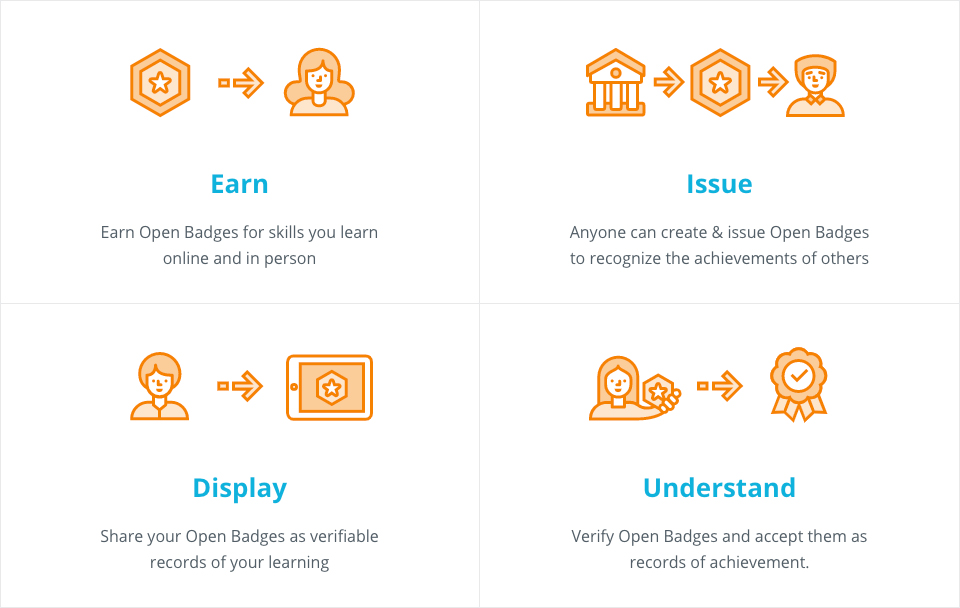
IMS Global Learning Consortium
The IMS Global Learning Consortium is a non-profit focused on technology that can affordably scale and improve educational participation and attainment. The Mozilla Foundation was at the head of the pack in the credential business with the inception of the Open Badges Initiative until the start of 2017 when IMS Global Learning Consortium took over work on the project. In April of 2018, they released the Open Badges v2.0 which was adopted by many large digital badge distributers over the following year.
Open Badges v.2.0
The Open Badges specification details a schema structure to help others create a more interoperable ecosystem. If a badge received from a distributor follows this data schema, it can be verified using the IMS Global Open Badges 2.0 Validator. This takes the values of the badge JSON object directly or via a URL that holds the data and the badge image.
Open Badge makes sending badges very easy because information is “baked” into the images of the credentials. Data can be inserted into the PNG files of the badge to hold the data for validation. Once detected, the data for the credential will either be a JSON representation of the open badge or the URL where the JSON Web Signature is hosted. The schema includes a verification object to hold the method of verification, including data fields contained in the schema that account for cryptographic security aspects.
The ability to include data behind a digital credential is vital for increasing the ability to share accomplishments ubiquitously. The badge recipient can send a PNG (also supports SVG) file for the credentials to be relayed to an education institution or a potential employer, then they can upload the file to the IMS Global Open Badges Validator themselves to independently confirm the validity of the credential.
This data schema is important to the future development and adoption of the digital credentialing technology across multiple business sectors specifically high value graduate education credentials.
Why Structured Schema?
With Open Badges specification, the data represents universality and interoperability. The defined data structures make it easy for existing software in education to seamlessly follow the schema for implementation of digital badges in an already established and operating online education community.
The idea of private education developing their own data schema so that the verification must be done through internal software has also been implemented. The unique data structures reduce the ability to send credentials across multiple different institutions and increases the difficulty of implementing these digital badges in existing technologies. One example of a data schema specific to their use is Greenlight Credentials.
It’s all About the User… and the Interface
Gamification is the application design or emotional trigger elements of game-playing within other digitally centric communication activities, such as an online marketing technique to encourage cognition and engagement with a product or service. With the concept of digital credentials, the gamification comes from the learning requirements, interactions, and assessments. Completing smaller tasks helps individuals earn micro-credentials, and once a collection of micro-credentials is received, individuals may be issued a more encompassing digital credential. One example of this is a credential for a degree program with micro-credentials detailing the prerequisite classes that must be passed for said degree program.
Synergy and Efficiency is Found When Form Follows the Function of Human Behaviors
The driver of all this opportunity is not new technology capabilities; it’s the professional graduate who now leaves a large wake of knowledge and credentials as they interact online every day, unlocking more exposure than a mere static diploma on the wall behind a desks. As students graduate, their primary need becomes displaying their credentials to the world at scale, presenting administrators with a unique investment opportunity that provides value. The opportunity is to invest to support the students with their new primary need to display their credentials.
Doubling as an opportunity to elevate an institution’s brand and value, authenticated digital credentials also extend a school’s ability to efficiently remain relevant while driving learning convergences between the different programs. Each course with its own unique credential can be sold. This type of credentials project can truly operationalize the potential to deliver parts of the Western Governors University’s model within the siloed administrative settings of traditional multi-level colleges, schools, and departments. Once we have created the end point to be digital, we can vend the product when potential students add their desired or required courses to a cart and mix and match.
Relevancy is Gained When Matching Needs
We already mentioned where digital credentialing is in the technology adoption lifecycle in convergence with blockchain’s Hype Cycle to create a tipping point in educational credentials. While the wide adoption of these technologies will create disruption in education, they will also create massive opportunities for those who jump on board.
To fully understand the convergence of these three theories, we can look to examples such as Uber and Netflix.
Make Dust or Eat Dust Moments Happen
Uber did not wipe taxis out overnight because the cars, drivers, or time to destinations were so much better. The devastating wave of change was sparked and fueled because the taxi industry had operated with static advantages and mounting restraining forces and with impunity to viable competition for a century (1908-2008). Why did the Uber business model consume the entrenched, established, and mature government regulated and protected taxi industry so quickly?
No, it was not the most assumed force majeure of industry: technology that could not for some reason be adapted into a mature industry. They had cellular technology incorporated from day one, two decades before the new alternative overwhelmed the industry. They armed their vehicles with smart phone technology from day one. Thousands of companies deployed the technology from an inside-out, insular perspective on behalf of the dispatch drivers not the customers. In addition, the drivers personally all carried smart phones.
No, it was not the second most assumed reason: it was not old infrastructure debt that could not migrate to the changes in the environments they and their customers operate within. The investment cycles for new technology and vehicles were less than 36 months. 33 percent of the infrastructure in the taxi business was replaced every 36 months, allowing all current Investments and infrastructure to be replaced over a nine-year period of time. The technology was available, the digital methods were mature for decades.
The Real Challenge to Smart, Right-Sized, and Properly Timed Investments.
Entrenchment and conviction of company leaders who primarily relied upon their seasoned operators who built and protected the old systems based on a paradigm of control to build the new systems was the common spoiler. The challenge was entrenchment leadership bias. As a consensus, and well discussed to great industry unity at leadership conferences, the leadership of thousands of companies refused to make very simple extensions and adaptions to their customer interfacing applications. After all, if none of them did it, then none would need to do it.
As a very mature industry, they launched their CTOs and IT teams into the projects. This is contrasted to understanding the added opportunities were based on strategy and design thinking. We realize this is Monday morning quarterbacking talk, although that is the point of this white paper and real mentorship. To learn from the lessons of last time and leverage what we have learned as we move to other industries with the same methods or technology is key. Naturally, internally based teams developed and deployed the technology to increase company control and leveraging the new technology benefits to save a few full-time positions.
The taxi industry purchased the new technology and they deployed the new technology, all from the perspective of how it would help the companies do their job tasks more efficiently. One example of the technology development in this sector was CabStartup, a taxi dispatching platform that didn’t change anything about the process.
Empower the Customers First and Foremost
When working on implementing new constituent-facing technologies, it is important to keep in mind that as creators, we should put the power in the customer’s hands, or they’ll take it out of yours—sooner or later when the time is right for them. This cardinal rule of innovation was broken. The primary perspective driving development was to protect data and use it on behalf of the company to increase margins, protections, compliance or internal efficiencies.
When marketing leaders study and teach the next generation about industry-wide failures dominated by mature companies operating in mature industries, there are classic and predicable tell-tale signs. Each of the major industry failures were caused by mature companies choosing to internally lead and fund innovation projects based first and foremost on technology capital budgets.
Be Careful What We Ask—We May Get it… And the Technology Debt That Goes with It
The new integration projects were commissioned for years in operations by the C suites. If leadership has a mind’s eye to accomplish status quo, with a couple of points of margin if all goes well, then why would executives want the design innovation teams to lead the projects? When was the last time, you heard a CTO, CIO, or IT departmental leader say, “You know boss, this is really impactful technology and it can do so much more than just streamline technology or security. Let’s get the marketing strategy and user experience teams to lead this one. The capabilities, once harnessed differently, will change the world and the industry.”
The real question is why? How could an industry of this maturity, size, entrenched with dependency by the entire economy, seasoned leadership, strength, and government support go upside down so fast? It was not so fast. It was decades of pushing off what could be, for the sake of staying with what is. It was the accepted norm of don’t rock the boat for executive leadership in mature industries leading mature companies.
Too Big or Too Entrenched to be Replaced by Something Better?
The industry of rented, leased, or chartered personal on-demand transportation is substantially growing every year, projected to reach $220.5 billion by 2025. Compared to the growth of the higher education industry which is expected to grow to $105.72 billion by 2025. The rideshare model of giving the customer a satisfying brand experience within the mobile app is something to keep in mind with the development of a successful credential platform. It starts first with executive leadership allowing the design and marketing-centric innovators to lead the projects.
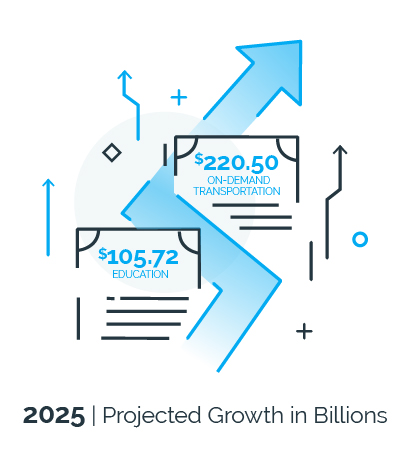
New Capabilities Change the Needs of the Market
For private educators adapting an institution’s LMS to vend a credential at the same time it returns the completion results page is the most efficient method to proceed. Anything else is too much overhead duplicated. The taxis were so out of date with deploying the capability of the day and that same new capability changed the needs of the markets. Think of the digital economy transformation, its effect on the economy, and how students’ need to wield professional creds in digitally centric interprofessional interactions as drastically different than what was in the past.
Anyone that would have come up with a better alternative than the taxi twoway radio and third-party relayed dispatch systems (think transcript process) would have been adopted at scale. Comparatively think of that piece of paper framed on the wall. In comparison, the form of what people needed or the way they used “rides” changed over time and the established Taxi industry that dominated for a century refused to play and was toppled.
Netflix Did Not Eat Blockbuster, Blockbuster Did
Netflix did not decimate Blockbuster over a nine-year period because Netflix had better movies, better quality, or better buildings. Netflix had low quality movies that buffered in the middle of the best scenes. Netflix won the game over Blockbuster because the entire industry of movie entertainment refused to adapt to the changes in the market. When entire industries refuse to change when change is needed, people will find alternatives. To which the CEO of Blockbuster at the time said, “Neither RedBox nor Netflix are even on the radar screen in terms of competition.” Since people have always stood in line to see a movie, he believed they would always visit the store to select their movies, no matter the tech, tech cannot duplicate the experience. Besides, where else would they go? We own rights to all the movies (think curriculum).
The takeaway, this is a time of fantastic change in the value equation of something that has been status quo for more than a century. We can learn from other industries that are decades ahead of higher education in creating, granting and using digital credentialing. This is the decade, this is the time and place to make dust or eat dust. It’s time to get busy and stop looking for a few hours at what your people can do incrementally better and instead look deeper how professionals use the degrees after they graduate, then leverage the reality of that thinking to create and assure the institution continued brand equity.

Embracing Change Early On
It took John Sperling 25 years of naysayers to work through the last of the educators saying online education was low quality and “our type of education will never be taught that way.” Most of education did everything in their power to stop the digital value equation progression. How did that fight work out? Don’t forget the last time education turned its nose up collectively at the last educational tipping point—online learning.
Those brands that embraced the changes ran away with the rings of growth, prosperity, and relevance for another generation. As a private brand, is it better to resist until the good stuff is gone and the value of doing it is only to keep market share from eroding? Or is it better to recognize digital credentialing on the momentum side instead of the inert side of change sweeping through education?
It’s all About the Digital Brand—More So Than the Next Building
Digital credentialing in higher education will become a digital brand’s primary point of recognition—more so than the corporate identities of the school which may teach many things a student may or may not identify with as a professional. Graduates are proudly displaying millions of daily impressions concentrated within the brand’s targeted stakeholder and influencer cohorts. Through the power of identity and positioning, this will become the future of perceptual digital brand value creation for smaller universities that aren’t already household names.
It’s not only about the brand’s extension into the digital economy, added efficiency and reach in product marketing, or creating that feeling of belonging around a brand. This is the kind of effort that will bring all those things to the table for private universities in one efficient initiative. This is not an IT project. This is about merchandising and marketing the brand, creating new intro points, new segmentations, and driving up the value of the degree. It’s the ability to create David against Goliath positioning power if implemented as a marketing lever by the private higher education brands.
The magic of influencing design finds its most impactful place with innovation.

The Forces of Change are in Full Bloom for Graduates
Universities can profess their backlog, endowments, or current growth as reasons they do not need to change something key to others uses, that is simple and has been effective, but has not changed in 100 years. The authors of this white paper are hopeful that detailing the use change with students’ needs to wield the credentials and how that reflects on the output of a diploma as the single emissary of an institution’s product for decades to come.
Over the last 20 years, the higher education industry absorbed the development of closed school management software or SIS, student information systems. The new class of SIS software in education finally provided an integrated system of the transaction ledger for student completion of academic credentials. These systems finally offered the promise and job of holding all requirements, billing and the financial aid planning, and financial compliance. But they were closed. They were proprietary.
Challenges with Closed Source
Once the industry was dependent on the capability, costs were increased by many folds. There are few enterprise-level university systems worldwide that truly perform end-to-end SIS:
- Pearson
- PeopleSoft Campus Solutions
- Ellucian Colleague Student/Ellucian Banner Student
- Campus Nexus Student
- Workday Student
Adopting closed-source digital credentialing companies and long-term contracts at the dawn of this evolution is similar to doing much the same as the last SIS platform evolution in higher education. At the turn of this new decade, we now have another repeat of this same development equation twenty years later. The leveraging of blockchain credentials will enjoy the same progressions, driven mostly by the same players within the same industry. A few big leaders will jump out and offer cookie cutter products and the big school systems will develop their own unique methods for delivering differentiating value. We still have some of the education industry integration veterans working that will remember the lessons from integrating the SIS systems and will move forward in a more open source and university-controlled method this time.
U.S. Government Interest in Interoperable Learning Records
The first step will be massive government initiatives. There is a huge wave of government initiatives focused on skill-based training, which will waterfall through federal reimbursement system (yes, this will even touch graduate education). The American Workforce Policy Advisory Board is working on Interoperable Learning Records. They are spearheading issuing and verification protocols and data standards. Included in the effort is synchronizing the different organizations that are maintaining rules for conducting business in the credential world, such as Open Badges and the IMS Global Consortium.
After 120 years of primarily regulating higher education process and curriculum quality, there is a wind of legislative change incrementally building. This emphasis to judge and measure an individual’s quality education and/or assumed skills is contributing to the tipping point amassing within the education industry. It’s driven by the perceived organizational duplicity of professional certification associations who certify the student’s competency from the degree earned.

Blockchain Tech and the State Schools
In June of 2019, the U.S. Department of Education started the Blockchain Action Network. The network’s intention is to establish a shared understanding of distributed ledger technology (DLT) and how it can be applied to the education sector. The fact that our government is actively developing into these different areas shows that the adoption of blockchain tech for government applications is right around the corner. That will eventually mean anything connected to that federal dollar. The government is also preparing for industry to adopt blockchain across many different business sectors.
The building wave of federal governmental change is supporting the facilitation and migration that will manifest deeply over the next ten years through legislative changes. This future progression and attempt to drive efficiency into the federally reimbursed educational pipelines will empower the transition from the traditional focus on organizational-based metrics to deeply focus on the outcomes of the education through skill-based assessments. This means universities need to work their curriculum and remap it to match competencies needed in different work settings.
The bigger picture—under the current environment, the government is slowly but steadily transitioning away from regulating the organization. Educational outcomes will be weighted more heavily than the traditional regulatory metrics. If we predict the future by the past with initiatives of this nature, you’ll see the early push of this within the next two years. If the emphasis continues on streamlining higher educational pipelines, even on government timelines, this should be fully manifested over the next ten years. If this line of thinking continues to persist, the federal government will eventually require students to pass the skills assessments directly correlated to the course reimbursement credit hours to get the federal reimbursement for the education.
Early Leaders Use Skill-Based Visualizer
Some early leaders who understand this shift are embracing the change. By developing digitally interactive and personally customizable interfaces projecting the potential students into their imagined work environments and sharing necessary skills tied to their degree progressions to thrive in the workplace, students can decide which direction they would like to take their education based on their individual interests and the required skills needed to work in those workplace settings.
This allows students to visualize the career outcome they want and be on the right path from the start. Once a path is decided, students can configure their degree that best fits the specific type of setting they want.
This is a part of the greater movement towards focus on the individual’s skills, needs, and desires, rather than the credentialing agency or diploma-granting university. The wave moving through the government is focusing on creating more business-type efficiencies, this is just one of those.
Design with the Graduate in Mind
The bottom line for universities—it’s going to be difficult for the design of the classic piece of paper framed on the wall to serve the need of what will eventually be tied to federal reimbursement, based on skills or competencies learned and proven. Universities now more than ever need to meet the requirements of the education paying public and their new use of combined, multi-discipline, hybrid skills desired in the evolving professional workplace.
If government requires this of state schools, ties the initiative to the federal reimbursement dollars for private education, and there’s a resounding wave of skill-based graduates being sought after and hired, where does your private university fit in? If universities simply provide a PDF of the diploma with embedded blockchain credentials, how will your graduates use this on their preferred platforms? Without badges designed for the purpose of demonstrating true individual skills, where will your graduates find themselves in the job selection process as their careers progress?
U.S. Blockchain Applications
Three other U.S. government departments are also taking steps to prepare for the implementation of the blockchain into their services. The Naval Warfare Center, a California-based research group of the US Navy, invested nearly $10 million into a blockchain software company, Simba Chain, to develop a secure messaging platform for them. The U.S. Air Force also contracted Simba Chain last year to develop a blockchain solution for the registration and tracking for their 3D printing components throughout their lifecycle. Lastly, the U.S. Department of Defense (DoD) released a plan for blockchain technology in a four-year roadmap “DoD Digital Modernization Strategy: DoD Information Resource Management Strategic Plan FY19-23.”
The research branch of the DoD, Defense Advanced Research Projects Agency (DARPA), has been engaged in two exploratory blockchain projects with a focus in cybersecurity since summer of 2019. The first project is focused on the development of a communication and transaction platform. The other project is in development of “un-hackable code” using blockchain technology, taking advantage of blockchain’s ability to gather information on bad actors who attempt hacking the system. New developments with blockchain, from private companies to government agencies, will help blockchain adoption at the same pace as any other global discontinuous innovation, multiplied by the cultural population shifts in use or paradigm.
Reinforcing Brand Confidence and Adding Data Security
If customers know their data is secure and anonymous, they will more willingly divulge the granular information constituents had previously kept private. The more we know about stakeholders interfacing with the brand, the better we can optimize the personalization of the delivery of goods and services to them. Recognized improved information security for the graduates will usher in a whole new method of creating better digital brands and better customer experiences we are now calling Distributed Customer Experiences™.
All of this new capability has been made possible with the aggregated use of real-time, dynamic, and AI-triggered messaging, now converging with the underlying technology of blockchain and has become the key to unlocking a brilliant new win-win world for marketers and their customers.
Implementing New Technology in Risk Adverse Higher Education
When integrations are done right the first time, it’s about helping brands work with new technology in stride. The mission of a best of class strategic and creative-based integration company is providing a fully prepared team to parse through and then implement new marketing methods or brand communications centric technology. A focus of marketing, messaging, advertising, seamless integrations, and business intelligence technology and the corresponding new methods, including new hands on training to get the most out of the tech and design for in-house teams.
In the end, all of it is designed to create preference, differentiation, or efficiencies for the brand. With the accelerating digital economy, it’s important for brands to be open to change enough to confidently harness what is next to compete most effectively and add or secure market share. This partnering approach of true agents is significantly different than securing another specialized vendor and signing another software contract. This new breed agency approach empowers private brands to harness the waves of change instead of being left out.

Learning by Trial and Error?
Education is now learning some of the most instrumental tide changes effecting multiple interaction points within the digital ecosystems are a challenge particularly for long tenure internal departments. Depending on the nature of the integrations project, it can cost years to synthesize the changes to existing methods with new first-time technology implementations. The inertia to the best ideas for the institution must be stewarded through the silo control structures in higher education.
In addition, the costs of learning by very expensive opportunity costs lost as internal teams learn with live fire trial and error, hiring and firing, and investment after investment are massive. The cost of the tech, the cross-discipline considerations and its deeper impact forces us to depart from the ideas created for a simpler time. The idea of teams eventually learning by doing. Also, instead of firing up the constituents with one more big win that makes coming to work joyful by seamlessly leveraging tools empowering the brands stakeholders to thrill the constituency is priceless. This must be compared to one more technology change that did not live up to its expectations.
When They are Happy and You Know it, Their Faces Will Surely Show It!
New technology deployed should make everyone’s lives notably better from day one. Or it should not have been released for use. How would anyone know where that line is, if it is the first time, they have deployed the methods or technology? The pitfalls are many and unknown but commonly manifest as enduring the disaster and forever diminished returns if the new initiative was not designed around the users and use. Or, the new methods and technology was not trained deeply enough with the users to create satisfaction.
Pick your poison. Any one of these things not completed with balance and excellence (and that takes previous experiences) will diminish the organizations appetite and ability to absorb the next healthy change.
Instead it creates, stokes, and cements resistance to change. When it comes to how best to apply, gain mastery, and right size marketing-centric new technology fusions or mashups, there are new breed, cross-disciplined teams being picked for the job. The new breed integrators have had to renovate buildings, collapsed multiple companies under one roof, and hire talent from around the world specifically to fill this vacuum.
The focus should be placed on supporting in-house teams and allowing the overspread internal staff to keep doing what they do while the organization implements the right sized versions of the new classes of tech and method, all in stride. A brand should not have to sacrifice one for the other. The daily job of satisfying the stakeholders should be accomplished, at the same time new tech and methods are being tested, learned, and developed. In this model, the private brands can leverage the new technology working, and all users trained and very happy in a matter of months compared to years.
Experience is as Experience Does (My Momma Says)
An example as a turnkey integrator, the experience with new capabilities of blockchain runs deeper than applying the tech to customer experience funnels or a credentialing project. In the early days of cryptocurrency, the development teams created a blockchain wallet with the intention of immediate deployment as an early day investment of the firm into our talent and new skill creation.
After the Facebook congressional testimony, we went back to the drawing board and rebuilt the entire app to become what we hope to be, one of the first third party wallets available on Libra. Libra has not been released as of yet, although we have rebuilt the application three times. Learned the lessons of early deployments to ensure as we do our first deployments for clients, they receive the value of it not being our first rodeo. Clients benefit from the lessons learned. They also benefit from 30 years of new technology integrations across all industries. There will be many competitors offering the new capabilities in time and few of us with battle scars to create that true added value of experts.
Food for thought, when providing any competent professional four or more chances to do something new, how much better and more efficient do we become in comparison to the first time something new is implemented? Top agencies have this kind of commitment, clients receive the value, benefit, and the competence of mastery on the first project. A true win/win.
EXECUTIVE TAKEAWAYS
So, what’s next? Ask yourself:
What is your organization doing right now to embrace the combination of government legislative change, trends, and market progressions with regard to education credentialing in the platforms your graduates use?
If you have a project in the works, is it driven by your strategy, creative, and brand development teams, or is it being facilitated by your operational control teams?
Should a product that will be used for 40 years, outside of the college environment by your graduates, be designed by and for internal use?
Are the people who are crafting it influenced by outside-in thinking? Do they have the right perspectives and considerations for the graduate’s use in mind?
We hope these questions start to provide amazing answers and ideas for your team
About the Authors
Brian Fabiano is the CEO and founder of FabCom, a full-service strategic integrated marketing and advertising agency with offices in Scottsdale/ Phoenix, Los Angeles, Seattle, and O’ahu. He is a nationally recognized innovator, advertising and marketing industry leader, author, and speaker whose insights in cross-channel cross-media messaging, business intelligence, strategic planning, positioning, brand mapping, and segmentation/database marketing are sought by corporations and trade associations alike.
Following the resounding success of his first book now in its sixth edition, Neuromarketology: How to Develop, Implement and Manage Dynamic, RealTime, Cross-Channel Marketing Campaigns that Generate Astonishing ROI, the second book is in the works. The case studies are being finalized for the second book in the planned trilogy and will delve deeply into sociographic message mapping using syntextual™ relevance to create your brands connections with Neuromarketology™.
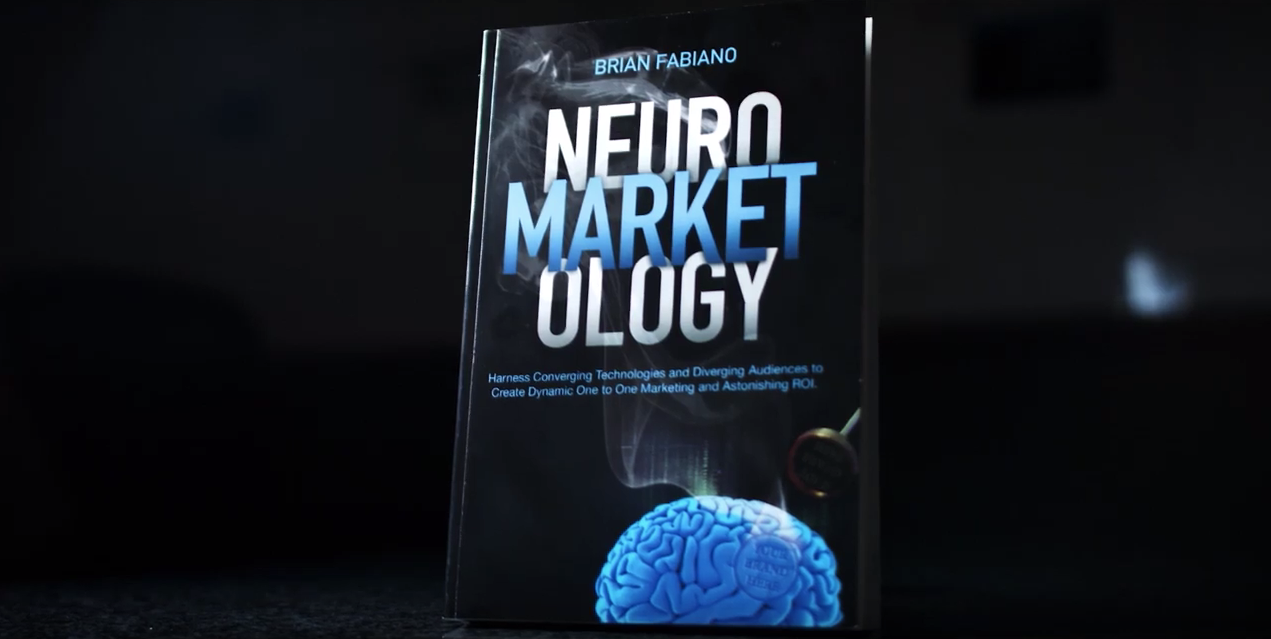
The second book emphasis will be on the practical everyday applications of leveraging the emerging and emotionally connective brand interactions driven from communication convergence, neuromarketing methods and delivered through business strategy, creative strategies, and the implementations of new technology.
In his role as a brand steward and agency CEO, he is focused on applying the contemporary convergences of artificial intelligence, dynamic automated messaging, as well as artificial and virtual reality leveraged to help differentiate brands in the transformative digital economy. In 2019 his team delivered the concept of the new “CRM” of the future at the 2019 Blockchain Conference as a keynote speaker opening day. He presented DCE or Distributed Customer Experiences™, driven by the new mashup capabilities of IOT data collections, real time feeds, coupled with AI or machine learning prompted dynamic messaging to challenge traditional approaches and improve the lack of security and fidelity of data with customer resource management (CRM) platforms.
Research and Contributors
Aaron Patterson,
Technical Researcher
Madison Miller,
Copywriter, Editor
Sarah Skidd,
Editor
Teddy Sifert,
Editor
Brianna Jennings,
Editor
Trevor Thompson,
Creative Director, Designer
Monique Sellick-Breed,
Designer
